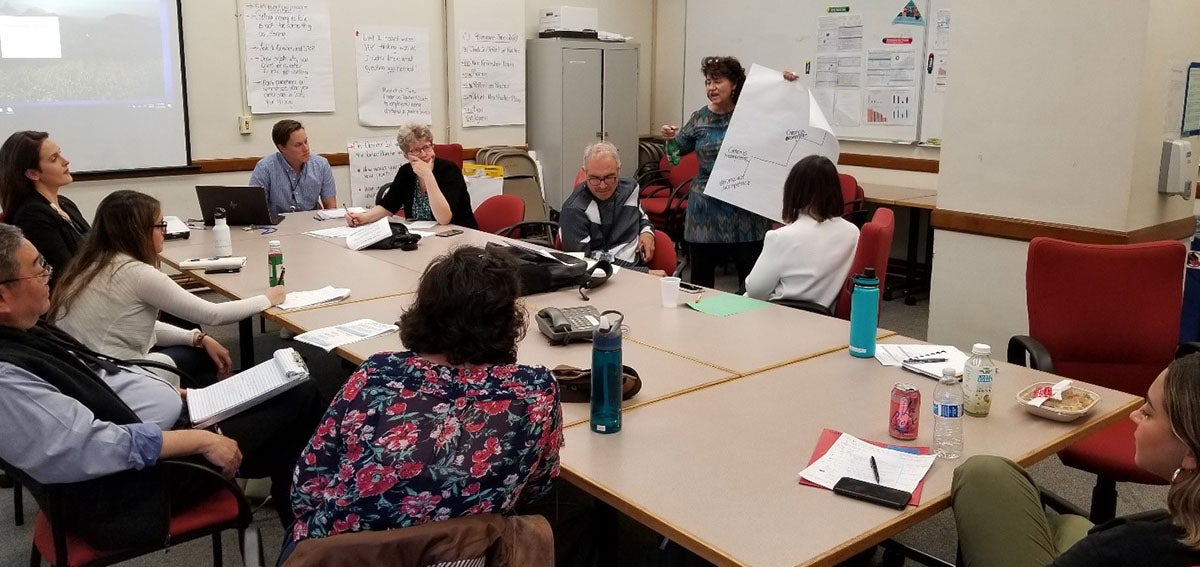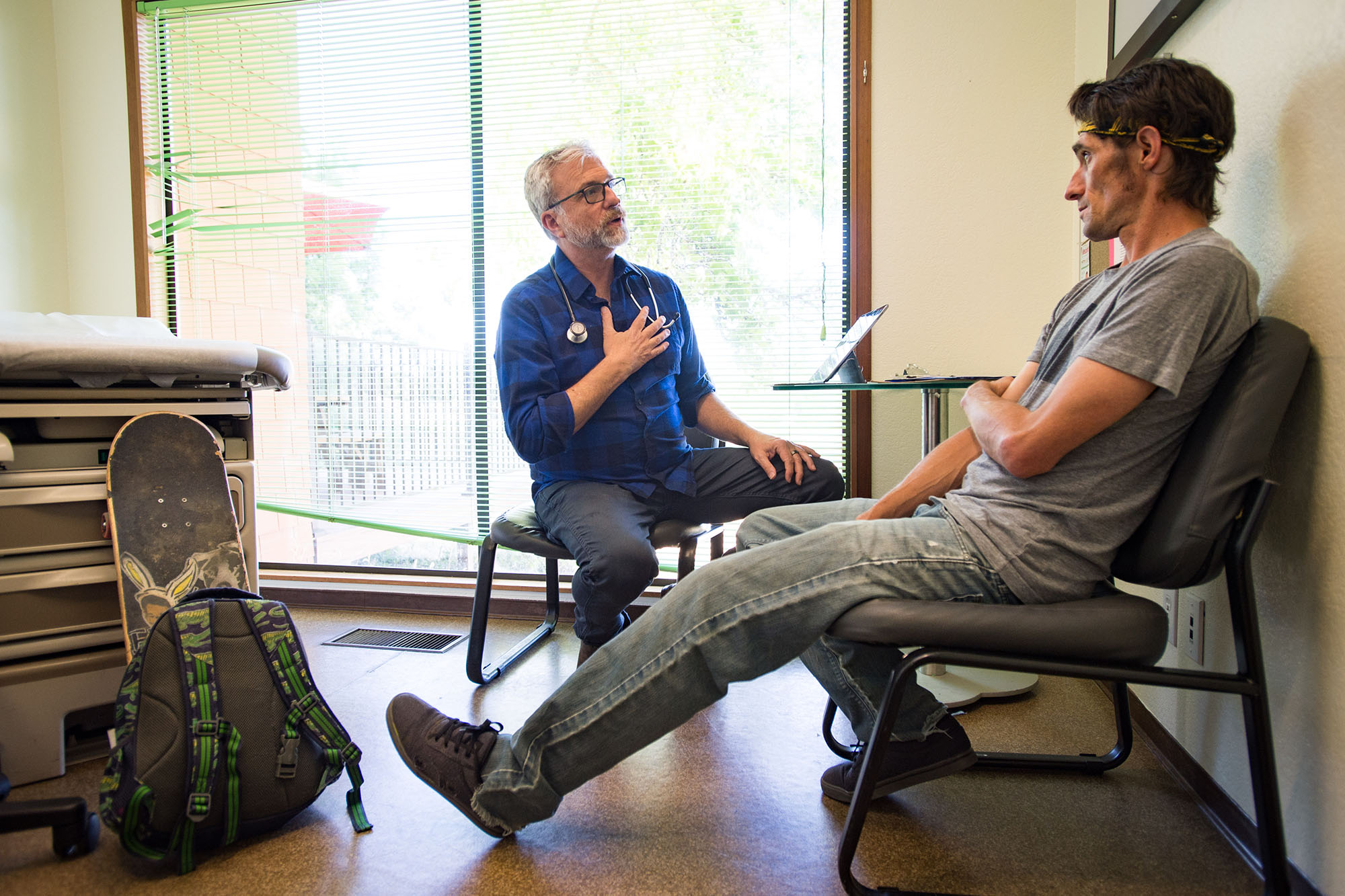
At the San Francisco Department of Public Health (SFDPH), we use the “Lean” philosophy and management system as our primary improvement methodology across multiple levels of the organization. Lean creates a culture of continuous improvement as a means of maximizing value to patients and minimizing waste in systems. Needed changes are identified, tested, and implemented by the people on the front lines doing the work.
As the organization’s knowledge of Lean has deepened over the last seven years, so too has our awareness of the key role that leaders and managers play in shaping and sustaining change. Broad-based, sustainable change requires the daily involvement and problem-solving efforts of everyone from frontline staff to department executives. Lean can’t succeed without teamwork and good communication. For staff members to feel comfortable communicating with one another, we need to create an environment of trust. To create trust, we need to learn how to ask open-ended, nonjudgmental questions stemming from genuine curiosity about other people’s views and ideas.
We need humble inquiry — the technique of posing effective questions to create the conditions that encourage another person’s best thinking. Humble inquiry is a term coined by Edgar Schein in his book Humble Inquiry: The Gentle Art of Asking Rather Than Telling. It challenges leaders to take a step back and support frontline staff in bringing their best thinking to the table. Humble inquiry is the starting point for developing SFDPH into an organization of 8,000 problem solvers.
The First Training
In October 2019, we ran our first humble inquiry training for 45 managers and staff members from across SFDPH. The California Improvement Network, which sponsored the training, is a project of CHCF and is managed by Healthforce Center at the University of California, San Francisco.
The training focused on teaching the technique through a combination of didactic instruction and peer-to-peer practice. Participants were asked to come prepared with a current problem they are trying to manage. They learned these principles of humble inquiry:
- To help someone develop problem-solving techniques, a leader must create the conditions to let them think.
- Practice humility — step back, listen, and hear someone’s thinking. Focus on the other person’s thoughts and not your own.
- Ask rather than tell. This helps us set aside preconceived perceptions and biases and temporarily makes us vulnerable while empowering the other person.
Participants then completed multiple cycles of practice in groups of three, wherein one person would describe a real problem or challenge and another would act as a coach by asking open-ended questions. Meanwhile, the third member of the group would capture the questions verbatim and provide objective feedback to the coach. Direct, immediate feedback helped both crystallize the learning and highlighted our innate preference for telling instead of asking. This conscious effort is necessary for leaders to acquire new habits and eliminate deep seated ways of thinking when interacting with coworkers.
Making Great Strides
Participants practiced humble inquiry for several weeks, then attended a tune-up session for additional coaching and training. The process helped them generate improvement ideas from staff and managers and created more team engagement around these ideas. One participant used humble inquiry when coaching coworkers, remaining focused on asking open-ended questions. It became easier to think of questions in the moment, the participant said. Another used humble inquiry to collaborate with the SFDPH information systems and business intelligence teams to develop new reports in our new systemwide electronic health record system.
When we surveyed them a month later, SFDPH employees reported making great strides in using humble inquiry. They demonstrated they had retained their lessons and better understood their role as coaches in helping to develop the thinking of others. Participants found that it felt awkward when using humble inquiry because of frequent pauses in conversation as people thought through the questions. This highlights a key element of humble inquiry — transparency. The process felt smoother, many participants said, when they were open about learning and might fumble. The willingness to say “I’m trying something new” alleviated some of the awkwardness.
We expect the deployment of humble inquiry to start small before spreading across SFDPH. We’re slowly integrating the technique into strategic planning, into the way we talk about our daily challenges, and as a problem-solving tool. We’ll learn as we go.
Organizations interested in adopting humble inquiry should develop their leadership and performance improvement staff first so they can serve as coaches when spreading the skill set. The concept is simple, but the practice is hard. Because we are hardwired to tell rather than to ask, coaching and feedback is needed to change innate thought patterns. Consider buddying up with someone in training and ask them to observe you in meetings and your interactions with others to provide quick feedback on your use of open-ended questions. It takes discipline and practice to be successful.
In every organization, some of the best improvement ideas and opportunities have yet to surface. Sometimes all it takes to bring them out is a genuine question coming from a place of humility.
Authors & Contributors

Lisa Golden
Lisa Golden, MD, is director of the Kaizen Promotion Office for the San Francisco Department of Public Health. She has a special interest in performance improvement and care of vulnerable populations. Golden trained in family medicine at Zuckerberg San Francisco General Hospital, where she served as chief quality officer for ambulatory care.

Jonathan Sears
Jonathan Sears is a performance improvement specialist at the San Francisco Department of Public Health, where he supports and coaches teams in the department-wide deployment of the Lean approach in health care. He has led the development of A3 thinking and problem solving skillsets for the department’s staff. Previously, Jonathan was a quality service analyst with a chronic condition special needs managed care plan in Austin, Texas, working on improving services for people with end-stage renal disease.
He earned a bachelor’s degree in biology and a master’s of public health at the University of Vermont.





